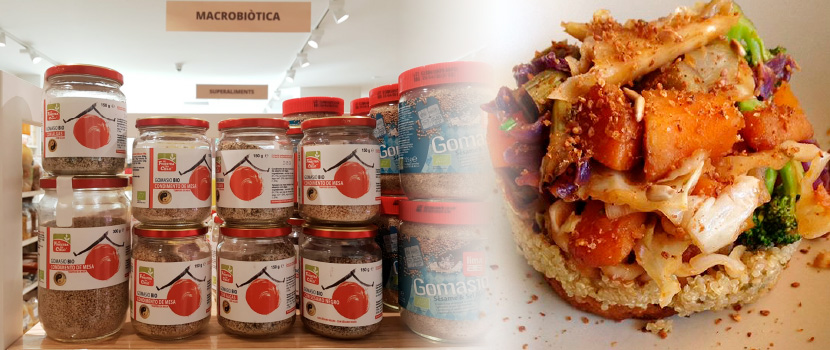Macrobiotics
It was originated by the Japanese writer and teacher George Ohsawa in the 1940s. Its etiology comes from macro (large) and bios (life), the great life. Ohsawa based on his experience proclaimed to consume basic, natural, seasonal and locally grown foods. Well he observed the harmful changes in people’s habits and health due to the great growth of agriculture and industry. It’s just now, a few years ago, when macrobiotics is starting to be heard and practiced.
Nowadays we all share the desire to be healthy, this philosophy offers us an approach aimed at improving and preserving health from food, lifestyle and traditional wisdom. Food is the most important aspect and for this reason the macrobiotic lifestyle gives it a big role. The first step is to eat basic and natural foods to avoid as much as possible chemical substances that our cells do not recognize, generating toxemia and overloading the organs and tissues.
The lifestyle that macrobiotics promotes is basic and unfortunately the current pace of life has disconnected us from this basis; waking up early, not eating before bed, chewing food properly, time to cook and daily exercise. These changes will bring us more vitality and desire to live, active and vivid memory, emotional stability, physical flexibility and a good immune system. Balance is sought in the yin/yang concept to describe two opposite and complementary forces, which are present in everything, food, seasons, activities…
THE GOMASI
Its main food bases are whole grains, vegetables, oilseeds, nuts, seaweed and supplements such as miso, gomasio and natto.
In autumn it is essential to tone the body to provide it with a good winter, Gomasi is an important food to nourish the vital energy, defenses and provide the minerals that this season needs.
This is crushed and toasted sesame, mixed with salt, at a ratio of 14 to 20 parts sesame to one salt. The crushed sesame oil surrounds the grains of salt allowing it to pass through the intestinal wall quickly alkalizing the blood.
Sesame provides a very high nutritional value based on high quality lipids (omega 6 fatty acids and lecithin) that help regulate cholesterol. In addition, it provides amino acids that complement those of cereals making proteins of high biological value. It provides vitamins E, K, group B such as folic acid, biotin, inositol and choline. Rich in the minerals magnesium, manganese and especially calcium. It should be noted that it is a good source of tryptophan (essential amino acid with very little presence in other protein sources and which has positive effects on the mental state, causing a feeling of well-being and excitement). So it is an excellent complement to add daily with cereals and legumes.
Thanks to the richness in minerals, it is a great blood strengthener and alkaline. It tones the digestive system, as it stimulates the secretion of gastric juices and regenerates the intestine, activates the metabolism and tones the nervous system. Thus in states of weakness, without muscle tone, low defenses, infections. Where the body normally demineralizes and acidifies, gomasio is very useful.
Add it every day in a dose of 1-2 tablespoons, accompanying cereals such as millet, rice, quinoa…, legumes, salads, a good slice of bread with oil and gomasio, vegetable creams or the miso soup…


Leave a Reply